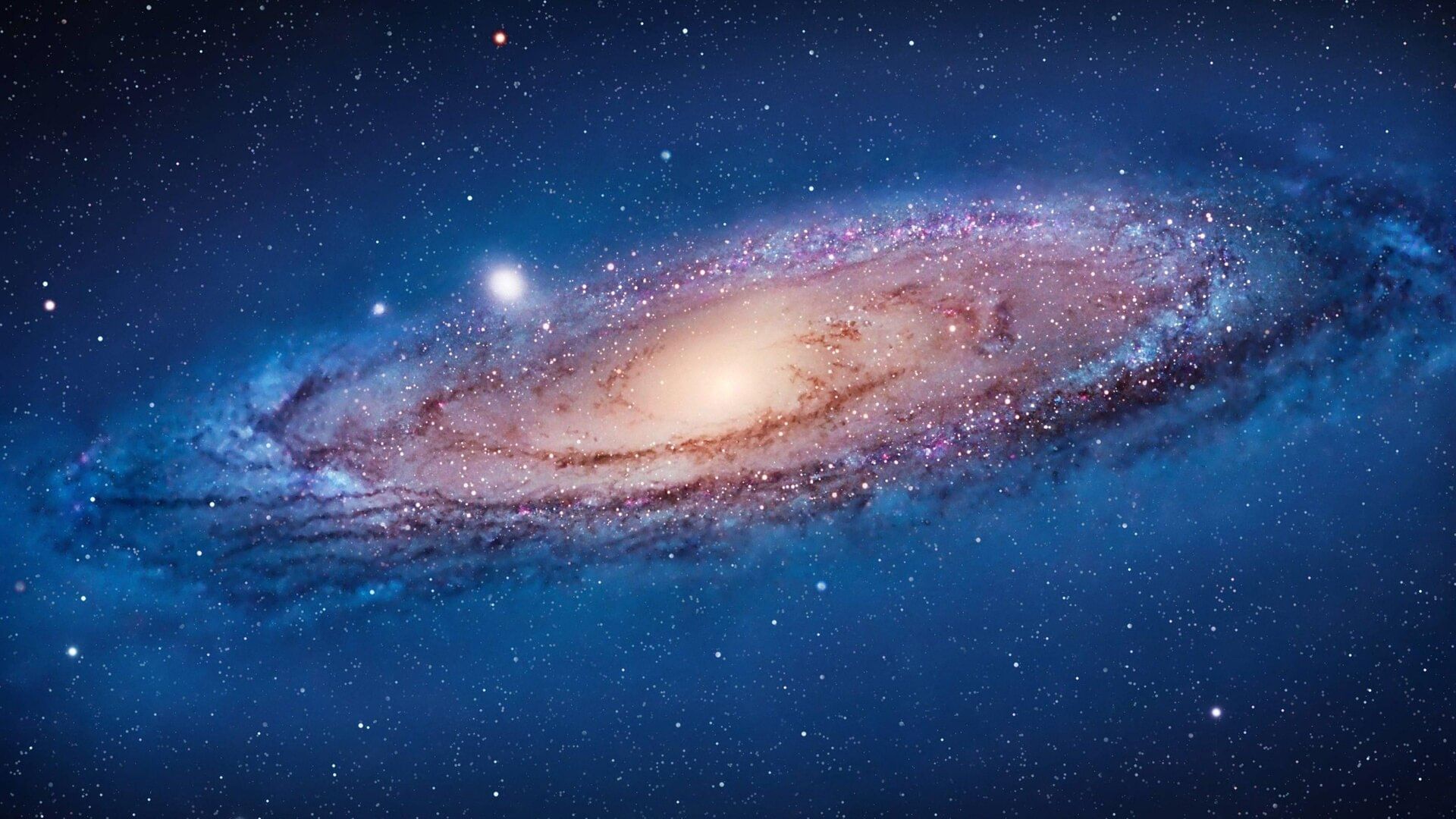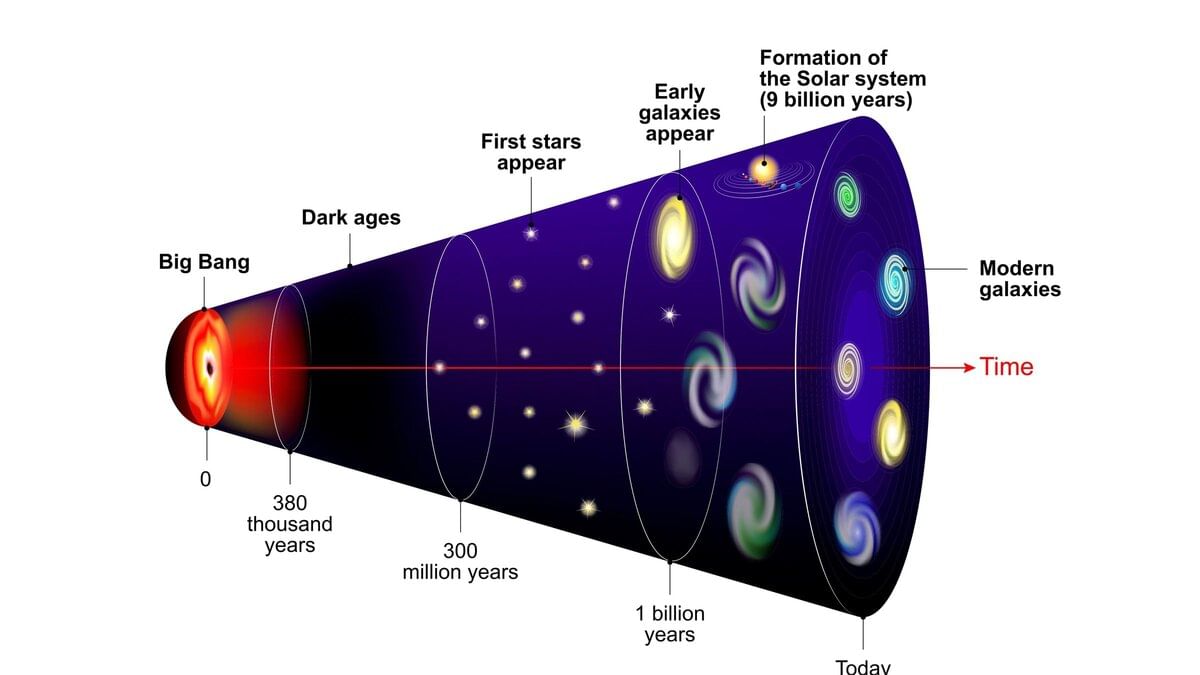Class 1 Exam > Class 1 Notes > General Knowledge for Young Learners > What is the Universe?
What is the Universe? | General Knowledge for Young Learners - Class 1 PDF Download
| Table of contents |

|
| Introduction |

|
| Origin of the Universe |

|
| What is Space? |

|
| Structure of the Universe |

|
| Composition of the Universe |

|
| Galaxies and Stars |

|
Introduction
When we look up at the night sky, we see countless stars twinkling in the darkness. But what lies beyond them? The word Universe refers to everything that exists — space, time, matter, and energy. It includes planets, stars, galaxies, and even the invisible forces that shape cosmic evolution. In short, the Universe is all of existence itself.Scientists are still trying to answer big questions like: How big is the Universe? Does it have an edge? Where did it come from? Modern science offers fascinating explanations, and our understanding is growing every day.

Origin of the Universe
The most widely accepted explanation for the Universe’s beginning is the Big Bang Theory.- Initial Singularity: The Universe began as a tiny, infinitely hot, and dense point called a singularity.
- Rapid Expansion: Around 13.8 billion years ago, this singularity expanded faster than the speed of light. This is called cosmic inflation.
- Formation of Matter: As the Universe cooled, particles like protons, neutrons, and electrons formed. Later, they combined to form hydrogen and helium — the first atoms.
- Galaxies and Stars: Gravity pulled matter together to form stars and galaxies.
- Continuous Expansion: The Universe is still expanding today, which we know because galaxies are moving away from us (observed through the redshift of their light).
The Big Bang Theory does not yet explain what caused the Big Bang or what existed before it — these are still mysteries scientists are working on.
What is Space?
Space is often imagined as empty, but it is far from nothing.- Vacuum: Space is a near-perfect vacuum, meaning it has no air, so sound cannot travel there.
- Location: Outer space begins roughly 100 km above Earth’s surface, where our atmosphere ends.
- Not Completely Empty: Space contains thinly spread gas, dust, cosmic rays, radiation, and even invisible dark matter.
- Radiation: Space is filled with dangerous radiation such as gamma rays and cosmic rays, which astronauts must be shielded from.
Because there is no air to scatter sunlight, space looks completely dark except where light from stars, planets, and galaxies is seen.
Structure of the Universe

- Cosmic Web: On the largest scale, galaxies are arranged in filaments and clusters separated by vast empty regions called voids.
- Galaxies: The main building blocks of the Universe. Galaxies can be spiral (like the Milky Way), elliptical, or irregular. Each contains billions of stars, gas, dust, and dark matter.
- Stars: Massive spheres of hot gases that produce light and energy through nuclear fusion. Our Sun is just one of the hundreds of billions of stars in the Milky Way.
- Star Systems and Planets: Stars often have planetary systems. Earth, for example, is part of the Solar System orbiting the Sun.
- Other Celestial Objects: Includes moons, asteroids, comets, meteoroids, and interstellar dust.
Composition of the Universe
The Universe is made up of both visible and invisible components:- Ordinary Matter (≈ 5%) – The matter we can see and touch: stars, planets, gas, dust, living beings.
- Dark Matter (≈ 27%) – Invisible matter that does not emit or absorb light but has gravity and holds galaxies together.
- Dark Energy (≈ 68%) – A mysterious force causing the accelerated expansion of the Universe.
Thus, most of the Universe is made up of things we cannot directly observe yet!
Galaxies and Stars
- Galaxies are giant systems of stars, gas, dust, and dark matter. Our home galaxy, the Milky Way, is a spiral galaxy containing over 100 billion stars.
- Stars are born from clouds of gas and dust (nebulae). They spend millions to billions of years fusing hydrogen into helium before dying as white dwarfs, neutron stars, or black holes.
- Other Galaxies: There are billions of galaxies in the observable Universe. Some, like Andromeda, are similar to the Milky Way, while others are much smaller or larger.
Conclusion
The Universe is everything — space, time, matter, and energy. It began nearly 13.8 billion years ago with the Big Bang and has been expanding ever since. Most of it is still a mystery, as dark matter and dark energy dominate its composition.Humanity has only scratched the surface of understanding the cosmos. With advanced telescopes and space missions, scientists continue to explore its secrets — from the birth of stars to the edge of the observable Universe. The more we discover, the more we realize how vast and fascinating our cosmic home truly is.
The document What is the Universe? | General Knowledge for Young Learners - Class 1 is a part of the Class 1 Course General Knowledge for Young Learners.
All you need of Class 1 at this link: Class 1
|
64 videos|153 docs|40 tests
|
FAQs on What is the Universe? - General Knowledge for Young Learners - Class 1
| 1. What is the Big Bang Theory and how does it explain the origin of the universe? |  |
Ans. The Big Bang Theory is the leading explanation for the origin of the universe. It suggests that the universe began as an extremely hot and dense point approximately 13.8 billion years ago. This point expanded rapidly in a massive explosion, causing the universe to cool and allowing matter to form. Over time, this matter coalesced to form stars, galaxies, and other cosmic structures, marking the beginning of the universe as we know it.
| 2. What is the difference between space and the universe? |  |
Ans. Space refers to the vast, seemingly infinite expanse in which all objects exist, encompassing everything from the smallest particles to the largest galaxies. The universe, on the other hand, includes all of space along with all the matter and energy it contains, comprising galaxies, stars, planets, and cosmic phenomena. Essentially, space is a component of the universe, which is the totality of everything that exists.
| 3. What are the main components of the universe? |  |
Ans. The universe is primarily composed of several key components: ordinary matter (such as stars, planets, and galaxies), dark matter (which does not emit light and is only detectable through its gravitational effects), and dark energy (a mysterious force driving the accelerated expansion of the universe). Ordinary matter makes up about 5% of the universe, dark matter accounts for approximately 27%, and dark energy constitutes about 68%.
| 4. How are galaxies and stars structured within the universe? |  |
Ans. Galaxies are massive systems composed of stars, gas, dust, and dark matter, bound together by gravity. They come in various shapes, including spiral, elliptical, and irregular. Within galaxies, stars are formed from clouds of gas and dust through processes such as nuclear fusion. Stars can vary in size, temperature, and brightness, and they often exist in groups known as star clusters. The structure of galaxies and stars plays a crucial role in the overall organization of the universe.
| 5. How do scientists study the universe and its components? |  |
Ans. Scientists study the universe using a variety of methods, including telescopes that observe different wavelengths of light (such as radio, infrared, and X-rays) to gather information about celestial objects. They also utilize space probes and satellites to collect data from beyond Earth's atmosphere. Additionally, theoretical models and simulations help researchers understand cosmic phenomena, allowing them to make predictions and test hypotheses about the universe's structure, composition, and evolution.
Related Searches















